Does my dog have separation anxiety? This question has crossed my mind more than once. I know that feeling anxious when I leave my furry friend alone due to dog separation anxiety can be tough, as many associate separation anxiety with how dogs experience stress and separation anxiety issues. Understanding the signs of separation anxiety, such as when a dog displays stress or a dog bark, is crucial for both of us as pup parents. I often wonder if my dog’s behavior, which many associate with separation anxiety, is a cry for help or just typical dog antics, especially considering the separation related behaviours quiz and potential separation anxiety issues. Taking a “Does My Dog Have Separation Anxiety Quiz” can provide clarity and guide me in the right direction. It’s essential to recognize these behaviors early on, as many associate separation anxiety with dog separation anxiety, to ensure my pup stays happy and healthy despite potential separation anxiety issues. By addressing this separation anxiety issues, I can create a more comfortable environment for my dog, making our time apart less stressful for both of us, as many associate separation anxiety.
Key Takeaways
- Understand the signs of separation anxiety in dogs, including excessive barking, destructive behavior, and signs of distress when left alone.
- Take the separation anxiety quiz to assess your dog’s behavior and determine if they may be experiencing anxiety.
- Implement management strategies, such as creating a safe space for your dog to address separation anxiety issues and gradually increasing their alone time to build confidence.
- Explore various treatment options like behavioral therapies, medication, or natural remedies to help alleviate your dog’s anxiety.
- If your dog’s anxiety persists, seek professional help from a veterinarian or a certified dog trainer for tailored solutions.
- Prevent future anxiety by providing consistent training, socialization, and positive reinforcement to create a secure environment for your dog.
Understanding Dog Separation Anxiety
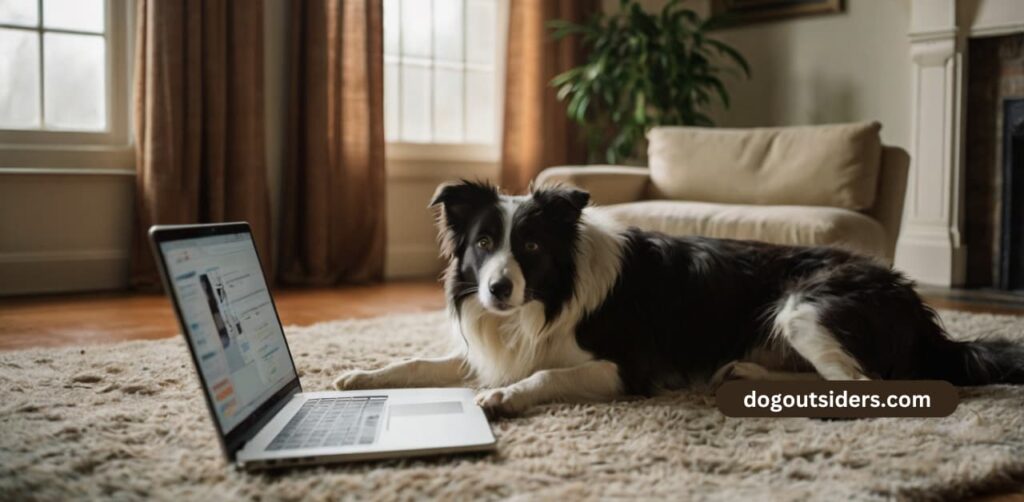
Definition
Dog separation anxiety is a condition where dogs become distressed when separated from their owners. This issue affects many dogs in the U.S. Studies suggest that about 14% of pet dogs experience some form of separation anxiety.
I have seen this in my own dog. When I leave for work, he often whines and scratches at the door due to separation anxiety issues. This behavior indicates his discomfort with being alone.
Isolation Distress vs. Separation Anxiety
Isolation distress occurs when a dog feels anxious due to being left alone, but it’s not linked to the owner’s absence specifically, unlike separation anxiety issues. Dogs may feel nervous during isolation due to separation anxiety issues even if their owner is nearby. In contrast, separation anxiety involves a strong emotional bond with the owner. The dog reacts negatively specifically to the owner’s absence.
Understanding this difference is crucial for effective treatment. My vet explained that recognizing these behaviors can guide owners in addressing separation anxiety properly.
Panic-like Responses
Dogs with separation anxiety exhibit panic-like responses when left alone. These responses can include barking, howling, or destructive behavior. Some dogs with separation anxiety issues may try to escape their confines, leading to injury or damage to property.
Common signs include excessive drooling and urination indoors. Dogs may also refuse to eat when alone. These behaviors reflect intense stress levels during separation.
I recall a friend whose dog, suffering from separation anxiety issues, chewed through a doorframe out of sheer panic when left home alone. This incident highlighted the severity of separation anxiety and its impact on a dog’s well-being.
Recognizing these signs early can help owners take action before behaviors escalate into more serious issues.
Addressing Separation Anxiety
Addressing separation anxiety requires patience and understanding. It’s essential to create a positive environment for your dog. Gradual desensitization techniques can help ease their fears.
Start by leaving your dog alone for short periods and gradually increasing the time away. Providing toys or treats can distract them during your absence.
Professional training or behavioral therapy might be necessary for severe cases. Consulting with a veterinarian can provide insights tailored to your dog’s needs.
Recognize Causes and Symptoms
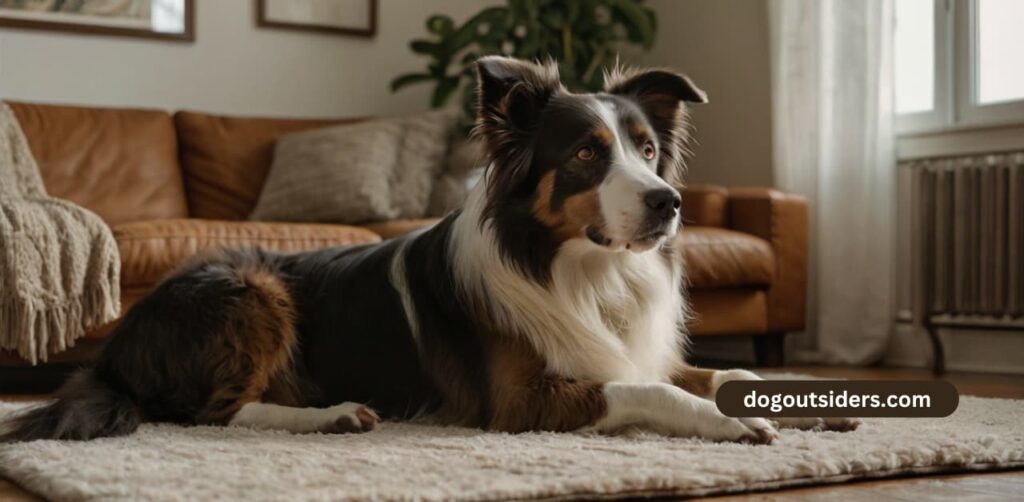
Common Triggers
Separation anxiety often stems from specific triggers. Changes in routine can upset a dog’s sense of security. For example, moving to a new home or changes in the household dynamics may lead to distress.
I noticed this with my own dog after I moved. His behavior shifted dramatically, and he seemed anxious whenever I left the house. This experience taught me how sensitive dogs can be to their environment.
Another common trigger is a lack of socialization during critical developmental periods. Dogs that were not exposed to various situations early on may struggle when left alone. They might feel insecure without familiar surroundings or people nearby.
Overt Symptoms
Dogs exhibit both overt and subtle signs of separation anxiety. Barking and whining are clear indicators that a dog is distressed. Chewing furniture or digging at doors also signals discomfort when left alone.
I have seen my dog bark incessantly when I step out for even a short while. It was evident he felt abandoned, showcasing how vocal dogs can be about their feelings.
Other noticeable symptoms include pacing and excessive drooling. These behaviors indicate high stress levels. Dogs may also try to escape, which can lead to injuries.
Subtle Symptoms
Subtle signs are often overlooked but equally important. A dog may display changes in appetite or lethargy when experiencing separation anxiety. These behaviors can indicate emotional distress rather than physical illness.
For instance, my dog used to refuse food if I left him alone for too long. It took me time to connect his eating habits with my absences. Understanding these subtle cues helped me address his anxiety effectively.
Impact of Past Experiences
Past experiences significantly influence a dog’s behavior. Dogs that have been abandoned or rehomed may develop heightened anxiety when left alone again. Their history shapes their reactions to separation.
Environmental changes also play a role in shaping behavior. A new pet or family member can disrupt established routines, leading to insecurity in some dogs. This shift can trigger symptoms of distress as they adjust.
Recognizing these factors is crucial for understanding your dog’s needs. My journey with my dog highlighted the importance of patience and observation during these transitions.
Take the Separation Anxiety Quiz
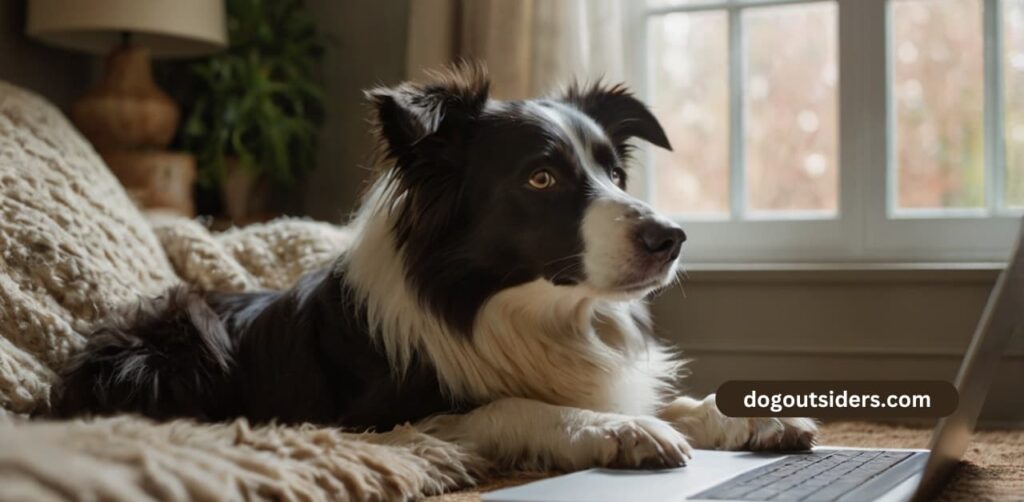
Purpose of the Quiz
Assessing your dog’s behavior through a separation related behaviours quiz can provide valuable insights. This structured quiz helps identify signs of separation anxiety. Many dog owners overlook these signs, thinking they are just typical behaviors.
I once thought my dog was simply being mischievous when he chewed furniture. It turned out he was experiencing separation anxiety. Understanding this helped me find the right treatment.
Common Symptoms
The quiz evaluates common separation anxiety symptoms like barking, destructive behavior, and pacing. Recognizing these signs is crucial for addressing potential issues. Dogs often show distress when left alone. Observing their actions can guide you to the next steps.
For example, my dog would whine and scratch at the door. This behavior indicated his discomfort with isolation. I learned that many associate separation anxiety with such reactions.
Interpreting Results
After completing the quiz, interpreting your results is essential. A high score may indicate significant separation anxiety issues. This suggests that your dog might need professional help or specific training approaches.
Understanding your dog’s needs requires honest self-evaluation. Reflect on how often these behaviors occur and their intensity. If you notice frequent episodes of distress, it might be time to seek assistance.
Next Steps
If the quiz reveals potential separation anxiety, consider consulting a veterinarian or a pet behaviorist. They can offer tailored advice and strategies for managing your dog’s anxiety effectively.
Many owners benefit from exploring resources like a virtual separation anxiety foundations course. These courses provide structured guidance on dealing with anxiety in pets. They emphasize understanding your dog’s feelings and needs.
Treatment Options
Several effective treatment options exist for managing separation anxiety. These include:
- Training to reduce anxiety
- Gradual desensitization techniques
- Medication prescribed by a veterinarian
By exploring these avenues, you can create a supportive environment for your dog.
I found that combining training with medication worked best for my dog’s anxiety management. Each dog is unique, so it’s vital to tailor the approach to fit individual needs.
Manage Your Dog’s Anxiety
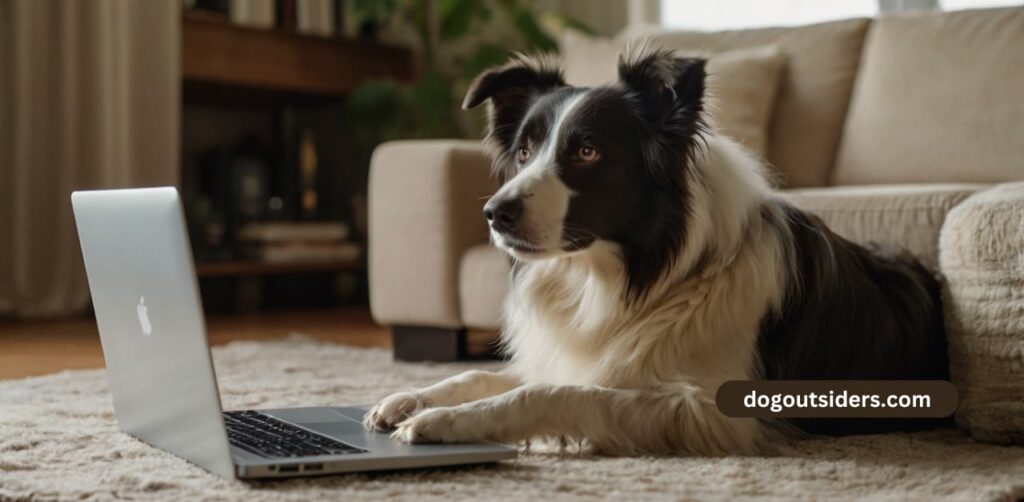
Daily Routines
Dogs experience stress just like humans. Establishing a daily routine can help alleviate anxiety in dogs. Regular walks, playtime, and feeding schedules provide structure. This consistency reassures them that everything is normal.
I noticed my dog calms down when I stick to a routine. Morning walks followed by playtime seem to make him more relaxed throughout the day. Incorporating training sessions into our daily activities also helps keep his mind engaged.
Safe Space
Creating a safe space for your dog is essential. This area should be comfortable and familiar. It can be a crate or a designated room with their favorite toys and bedding. When left alone, this space gives them a sense of security.
Many dog owners find that leaving an item with their scent helps too. A worn t-shirt or blanket can provide comfort during stressful times. I often place my old sweatshirt in my dog’s safe space. He seems to find it soothing when I am away.
Gradual Desensitization
Gradual desensitization is crucial for dogs experiencing separation anxiety. Start by leaving your dog alone for short periods. Slowly increase this time as they become more comfortable being alone.
I remember the first time I left my dog alone for 10 minutes. He barked excessively at first, but over time, he adapted to longer absences. Now he can stay home without issues for hours.
Professional Help
Consulting a canine behavior consultant may be beneficial if your dog’s anxiety persists. These professionals offer tailored strategies for managing anxiety effectively. They can assess your dog’s behavior and suggest specific training techniques.
Many dogs experience stress due to changes in their environment or routine. A professional can help identify triggers and develop coping strategies.
Dog Daycare
Dog daycare is another option for pet parents struggling with their dog’s separation anxiety. Many dogs thrive in social environments with other dogs and people. This interaction can reduce feelings of loneliness.
I have seen positive changes in my friend’s dog after attending daycare regularly. The dog became more social and less anxious when left alone at home.
Explore Treatment Options
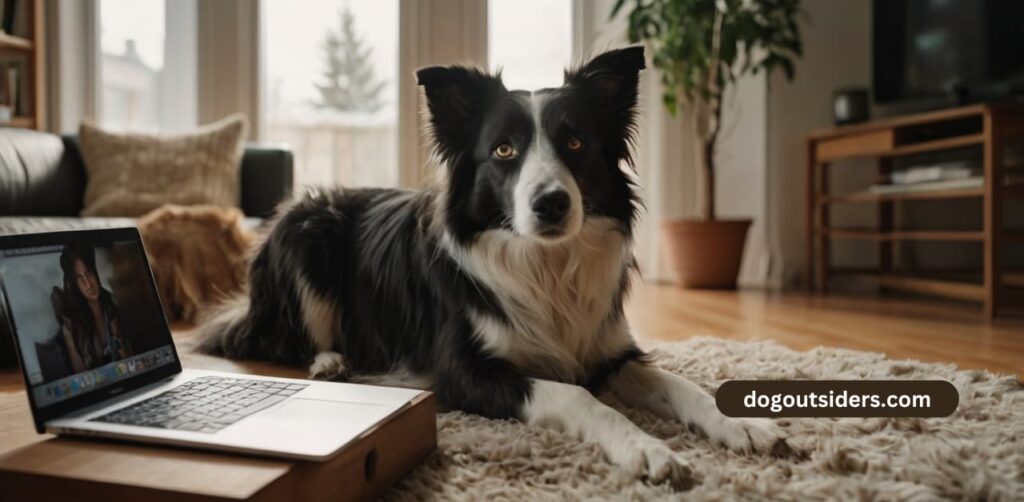
Behavioral Therapy
Behavioral therapy is a common approach for treating separation anxiety in dogs. This method focuses on modifying your dog’s behavior through gradual desensitization. It involves exposing the dog to short absences, gradually increasing the duration over time. I found this technique helpful when working with my own dog who displayed signs of anxiety.
Positive reinforcement plays a crucial role in this therapy. Rewarding your dog for calm behavior during departures can strengthen their confidence. Training sessions should be consistent and patient. Many owners see improvements within weeks.
Medication
Medication may be necessary for severe cases of separation anxiety. Veterinarians can prescribe anti-anxiety medications to help manage symptoms. These drugs work by altering brain chemistry to promote relaxation. They can be particularly effective when combined with behavioral therapy.
It’s essential to consult with a veterinarian before starting any medication. Each dog reacts differently to drugs, and side effects can occur. Monitoring your pet closely after starting treatment is vital.
Natural Remedies
Natural remedies also play a role in managing canine anxiety. Herbal supplements like valerian root and chamomile can provide calming effects. Aromatherapy using essential oils such as lavender may help soothe anxious dogs, too.
I often use calming collars infused with these natural ingredients for my dog. They provide a gentle, continuous release of calming scents that seem to ease his stress levels during stressful situations.
Comparing Effectiveness
The effectiveness of treatment options varies based on the severity of symptoms. For mild cases, behavioral therapy alone might suffice. Owners may notice significant improvements with consistent training and positive reinforcement.
In contrast, moderate to severe cases often require a combination of methods. Medication alongside behavioral therapy tends to yield better results for dogs struggling significantly with separation anxiety.
Natural remedies can complement both behavioral therapies and medications but should not replace them entirely. Each dog’s response will differ, so it’s crucial to tailor the approach based on individual needs.
Seek Professional Help
Consult Experts
I often recommend consulting a veterinarian or a certified dog trainer if separation anxiety is suspected. These professionals can provide valuable insights into your dog’s behavior. They can also rule out any underlying medical issues that may contribute to anxiety.
Veterinarians can assess your dog’s health and behavior. They may suggest a physical examination or behavioral evaluation. If necessary, they might prescribe medication to help manage your dog’s symptoms.
Certified trainers bring expertise in canine behavior. They can observe your dog in various situations. Their experience allows them to identify specific anxiety triggers. This tailored approach helps create effective strategies for improvement.
Benefits of Assessment
Professional assessments offer several benefits in diagnosing separation anxiety. An expert can provide an objective evaluation of your dog’s behavior. This perspective is crucial since owners may overlook certain signs of distress.
A thorough assessment includes observing how your dog reacts when left alone. It also involves understanding their body language during these moments. Trainers and veterinarians can pinpoint behaviors that indicate anxiety, such as excessive barking or destructive actions.
In my experience, having a professional’s input makes a significant difference. I once had a dog that displayed unusual behaviors when I left home. After consulting a trainer, I learned it was not just typical mischief but genuine anxiety.
Tailored Training Programs
Each dog is unique, so tailored training programs are essential for addressing separation anxiety. A one-size-fits-all approach often fails to meet individual needs. Custom programs focus on the specific triggers and responses of each dog.
Trainers assess your dog’s personality and behavioral patterns. They then develop a structured plan that includes gradual desensitization techniques. These techniques help dogs adjust to being alone without feeling overwhelmed.
Training may include crate training, positive reinforcement, and establishing routines. Consistency is vital for success in these programs. Owners must follow through with the training at home to reinforce what the dog learns.
I have found that consistency creates better results over time. My own dog thrived when we established a routine around our departures and arrivals.
Prevent Anxiety from Developing
Socializing Puppies
Socializing puppies is crucial to prevent future anxiety issues. Early exposure to different environments, people, and other animals helps them adapt. I often take my puppy to parks and pet-friendly stores. This experience builds their confidence and reduces anxious behaviors later on.
Start socialization as early as eight weeks old. Introduce your puppy to various sounds, sights, and smells. Gradually increase the complexity of these experiences. Positive interactions during this period can significantly lower anxiety levels in adult dogs.
Establishing Routine
Establishing a consistent routine is vital for dogs. Dogs thrive on predictability. A regular schedule for meals, walks, and playtime helps them feel secure. I noticed that my dog is calmer when we stick to our daily routine.
Routines reduce anxiety responses by creating a sense of stability. It’s essential to keep feeding times and bathroom breaks consistent. This predictability lowers anxiety symptoms and promotes good behavior over time.
Early Intervention Strategies
Early intervention strategies can prevent anxiety-related behaviors from developing. Recognizing signs of anxiety is the first step. Common symptoms include excessive barking, chewing, or pacing. I pay close attention to my dog’s behavior when they seem restless or uneasy.
Training techniques like positive reinforcement can help address anxiety cases. Rewarding calm behavior encourages dogs to remain relaxed in stressful situations. Desensitization techniques expose dogs gradually to triggers that cause anxiety.
Consider using calming aids such as anxiety wraps or pheromone diffusers. These tools can create a soothing environment for your dog. Regular exercise also plays a significant role in managing anxiety levels. A tired dog is less likely to exhibit anxious behaviors.
Use Effective Training Techniques
Positive Reinforcement
Positive reinforcement is crucial for training dogs with anxiety. This method encourages good behavior by rewarding your dog when they remain calm. Rewards can include treats, praise, or playtime. I have found that my dog responds well to treats during training sessions. It creates a positive association with being alone.
Start small by leaving your dog alone for short periods. Gradually increase the duration as they become more comfortable. Each time you return and find them calm, reward them immediately. This builds their confidence and reinforces the idea that being alone is safe.
Confidence Building Exercises
Specific exercises can help build a dog’s confidence when left alone. One effective method is crate training. A crate should be a safe space for your dog, not a punishment. I noticed that my dog enjoys her crate when I make it cozy with blankets and toys.
Another exercise involves leaving your dog in a separate room while you are home. Begin with just a few minutes. Gradually extend this time as your dog adjusts. Use toys or puzzles to keep them engaged during these periods. This distraction helps reduce anxiety and boredom.
Practice leaving your dog alone while you step outside briefly. Make sure to stay calm and avoid making a big fuss when you leave or return. This teaches your dog that comings and goings are normal.
Patience and Consistency
Patience is essential in training anxious dogs. Progress may be slow, but consistency will yield results over time. I learned that sticking to a schedule helps my dog understand what to expect each day.
Training sessions should occur regularly, ideally daily. Short sessions of five to ten minutes work best for maintaining focus without overwhelming your dog. Keep the atmosphere relaxed and positive.
Avoid punishing your dog for anxious behaviors like barking or whining. Instead, redirect their attention to more appropriate activities. This approach fosters trust between you and your pet.
Building trust takes time, but it’s worth the effort. Celebrate small victories along the way. Each sign of progress indicates that your training techniques are working.
Final Remarks
Understanding your dog’s separation anxiety is crucial for their well-being. I’ve shared insights on causes, symptoms, and effective management strategies. Taking the quiz can help pinpoint issues, while professional help ensures tailored solutions. Prevention and training techniques are essential in building a confident, secure pup.
I encourage you to take action now. Assess your dog’s behavior and consider the options available. Don’t wait for anxiety to escalate—start implementing these strategies today. Your furry friend deserves a happy, stress-free life. Let’s make it happen together!
Frequently Asked Questions
Not all dogs experience separation anxiety. It often affects those with strong attachments to their owners, particularly rescue dogs or those who have faced significant changes in their environment.
Common symptoms include excessive barking, destructive behavior, pacing, and attempts to escape. Other signs may be urinating or defecating indoors and showing distress when you prepare to leave.
Observe your dog’s behavior when you leave. If they show signs of distress, such as whining or destructive actions, it may indicate separation anxiety. A quiz can help assess their situation further.
Yes, you can implement gradual desensitization techniques. Start by leaving your dog for short periods and gradually increasing the time away. Providing engaging toys can also help distract them.
If your dog’s anxiety leads to severe destructive behavior or self-harm, it’s time to consult a veterinarian or a certified animal behaviorist. Professional guidance can provide tailored strategies for your dog’s needs.
Yes, there are medications that veterinarians can prescribe to help manage severe cases of separation anxiety. Always consult a vet before starting any medication to ensure it’s appropriate for your dog.
Realize your puppy early and expose them to various environments. Establishing a routine and providing plenty of mental stimulation can also help prevent anxiety from developing later on.
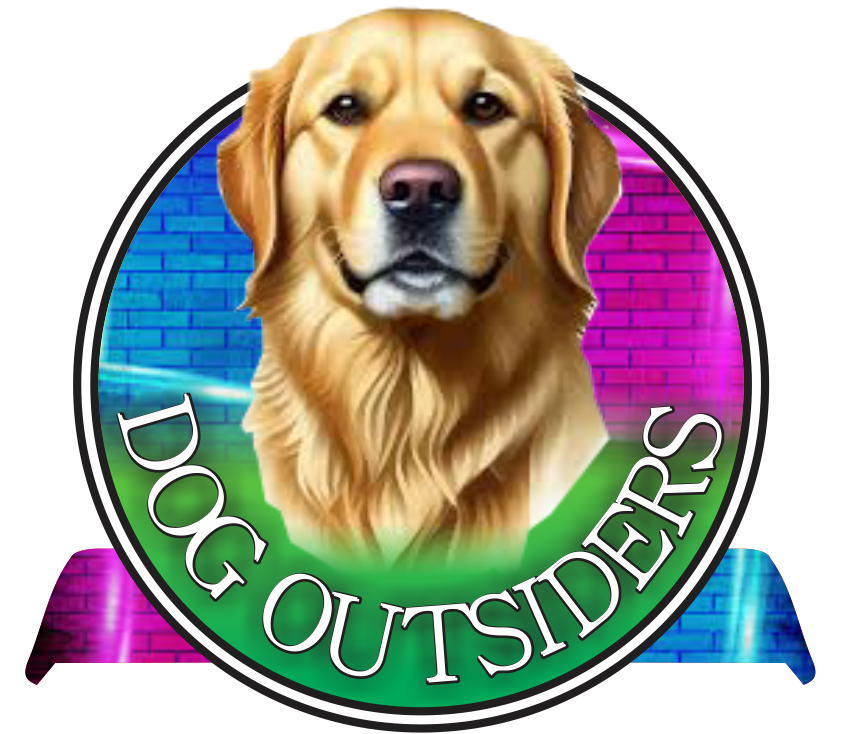






2 Comments